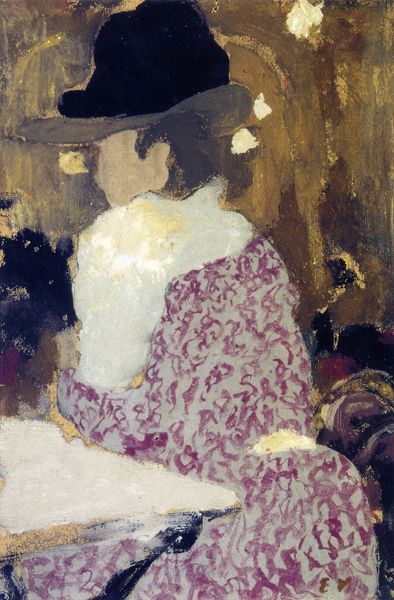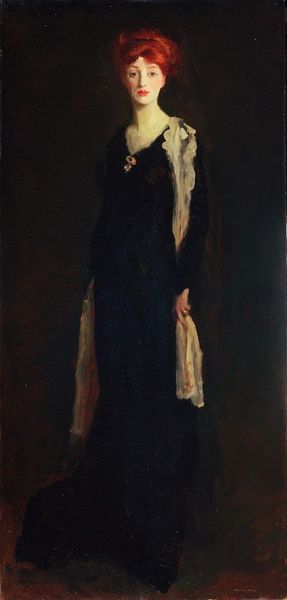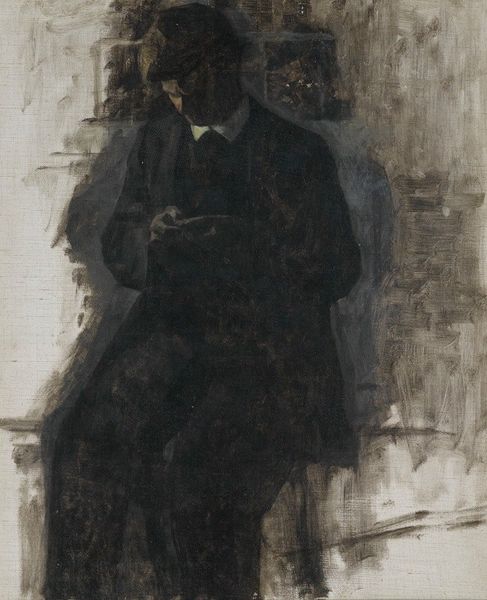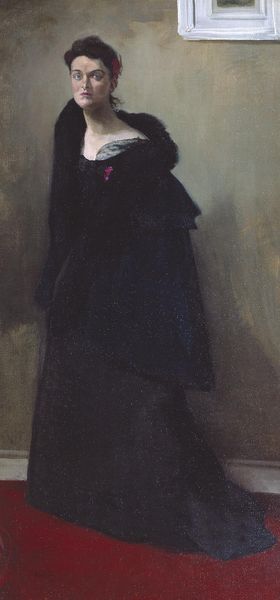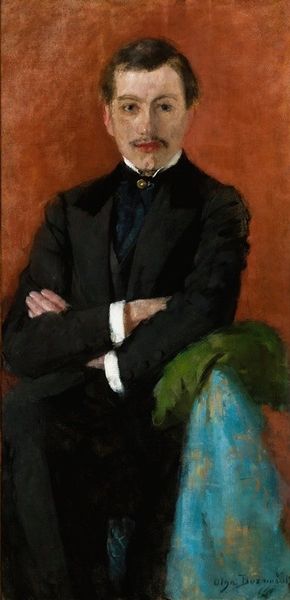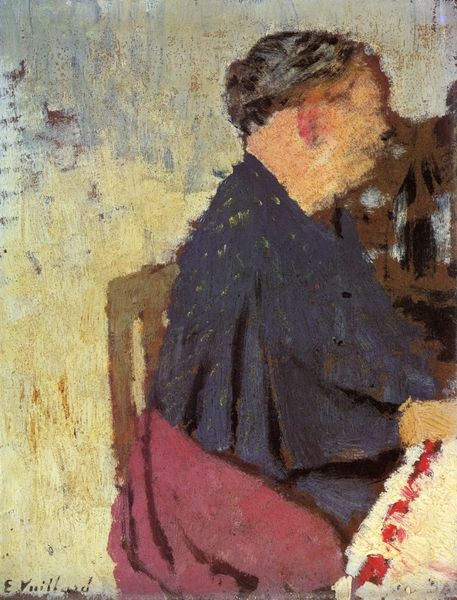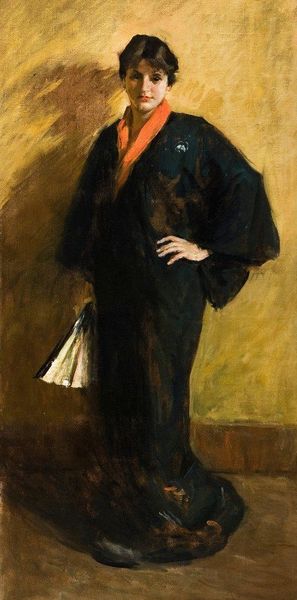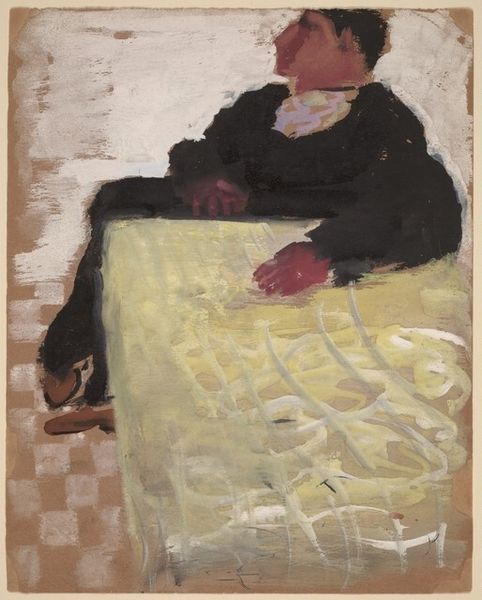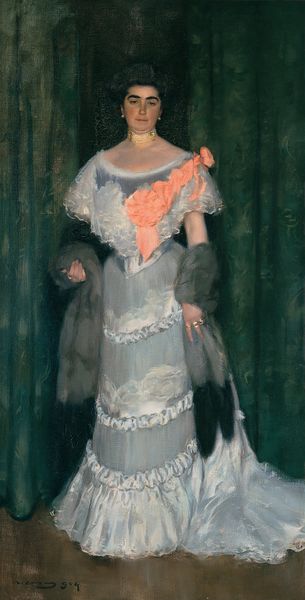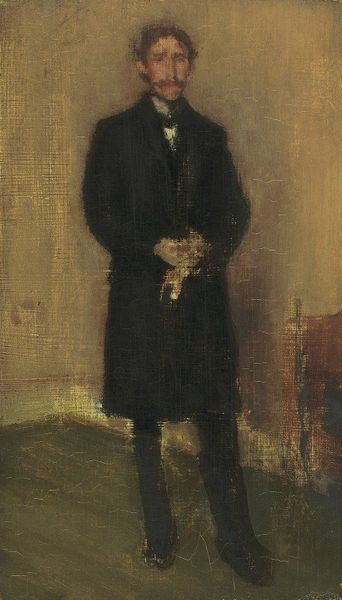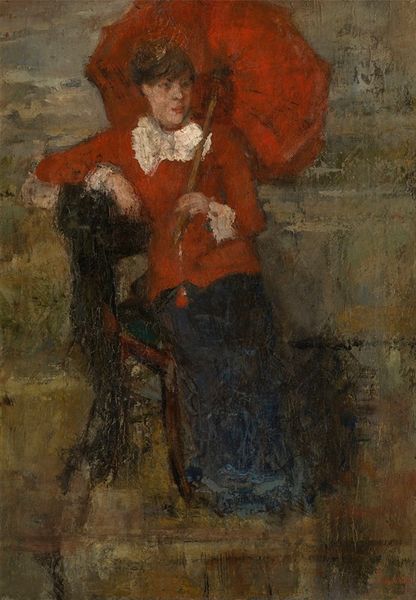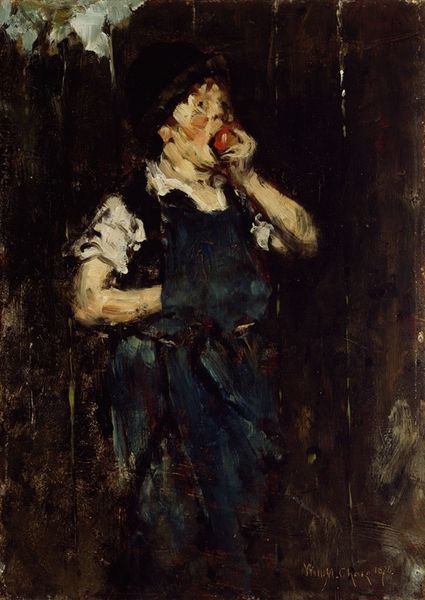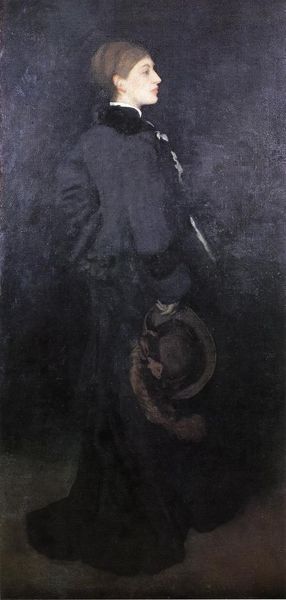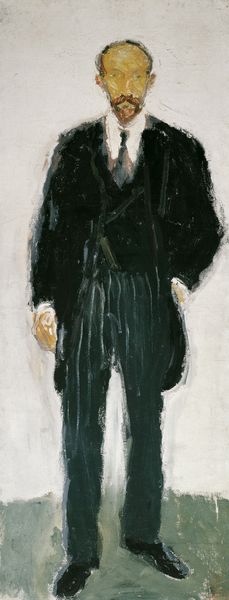
painting, oil-paint, impasto
#
portrait
#
acrylic
#
painting
#
oil-paint
#
oil painting
#
impasto
#
neo expressionist
#
ashcan-school
#
genre-painting
#
realism
Copyright: Public domain
Editor: This painting is titled "The Waiter," by Robert Henri. It’s done in oil paint, with a visible impasto texture. I’m immediately drawn to how the figure almost emerges from the darkness, with the white of the tray and shirt really popping. What are your initial observations? Curator: Notice the interplay between the dark background and the luminous, almost gestural application of paint defining the waiter's figure. How does the artist use value—the lightness and darkness of colors—to create depth and form, even in such a simplified composition? Editor: I see that now! The contrast really defines the figure, but what about the way Henri handles the face? It's so loosely painted. Curator: Precisely. Consider the brushwork on the face and hands – almost abstract, yet they convey just enough information for recognition. What does this strategic blurring of detail communicate to you about Henri’s intentions? Is it about realism, or something else? Editor: Maybe it's about capturing a feeling or an impression more than a literal likeness? The brushstrokes feel very direct, almost like he's trying to capture the energy of the moment. Curator: Yes! Reflect on how the dynamic brushstrokes and the limited palette contribute to the painting’s overall impact. Consider too, how the composition directs our gaze: The figure is frontal, yes, but Henri has deliberately tilted the serving tray towards us – engaging us directly as if we were seated in his restaurant. Do you think the surface qualities—the texture of the impasto, for instance—impact the image or augment it in any way? Editor: It makes it feel very present and alive, the thick paint giving him weight. I hadn’t noticed the angle of the tray until you pointed it out, it feels much more active now. Curator: Precisely! By observing formal relationships in an artwork—between value, gesture, and orientation—we begin to glimpse what the artist might be trying to tell us. Editor: That was fascinating. I’m going to look for that balance between realism and impression in his other works now.
Comments
No comments
Be the first to comment and join the conversation on the ultimate creative platform.
